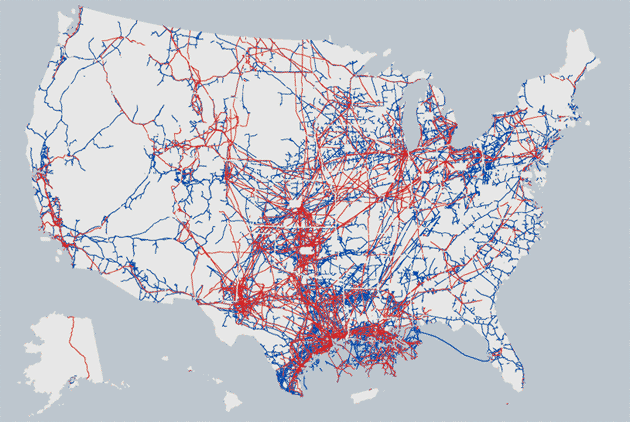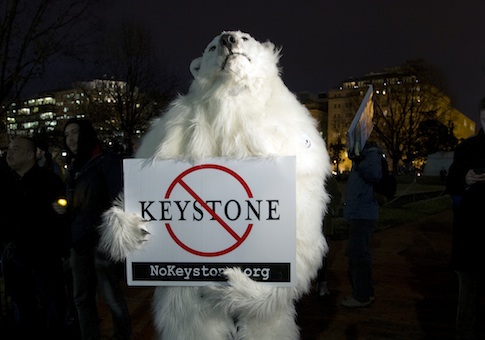On Friday, President Barack Obama extended the decision on Canada's Keystone XL pipeline until after the 2014 midterm elections. Announced on a Friday afternoon (the Good Friday holiday, no less) the story was barely covered by mainstream media outlets already heading out of town for their extended Easter weekend.
In a call with reporters on Friday, a Senior State Department official speaking on background said the administration "felt that it is important to have additional information and a better understanding of what that route might be, because it could have implications for the environmental, cultural and socioeconomic impacts that are being evaluated by the agencies."
This explanation is spurious, at best. The U.S. portion of Keystone will consist of 1,078 miles of 30" pipeline. Sounds like a major environmental issue, right? Not when compared to the already existing 2.3 million miles of pipeline already in the U.S. pumping petroleum, gas, and chemical products every day.

To hear Obama warn against Keystone, you'd think this 1,000 miles of new pipe would be the deal-breaker in his campaign promise to slow the rise of the ocean's tides. It defies any sense of logic or reason to suggest that 1,000 miles of new pipeline, installed with 2014 technology, would somehow endanger humanity when we already have 2,300 times that much already working without catastrophe.
So what is at play in this decision?
The answer could be found in the New York Times just two months ago:
A billionaire retired investor is forging plans to spend as much as $100 million during the 2014 election, seeking to pressure federal and state officials to enact climate change measures through a hard-edge campaign of attack ads against governors and lawmakers.
How would a billionaire environmentalist effect the President's unpopular decision to delay the Keystone decision? Politico connected some of the dots:
He spent millions on the 2013 Massachusetts Senate and Virginia governor’s races, helping Democrats Ed Markey and Terry McAuliffe prevail, and has become one of the most outspoken opponents of the proposed Keystone XL oil pipeline. The group has also showed signs it’s willing to go after Democrats who support Keystone, possibly including vulnerable Louisiana Sen. Mary Landrieu.
Bottom line: There's money in them thar anti-Keystone hills!
Most observers believe Obama will eventually make the obvious decision to allow Keystone. Big Labor supports it as well as a majority of U.S. senators, including many from his own party.
That's what makes the delay so transparently cynical: As long as the Keystone question is open, the big money from deep-pocketed donors who have an obsession with global warming will continue to gush into the Democrat's coffers.
